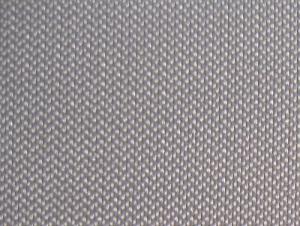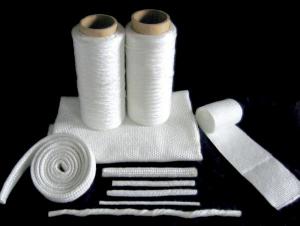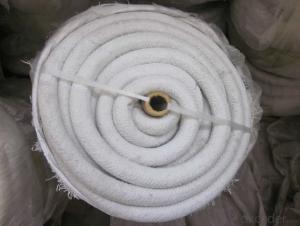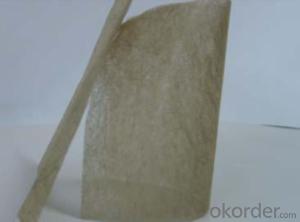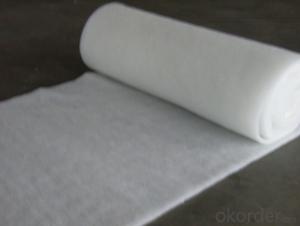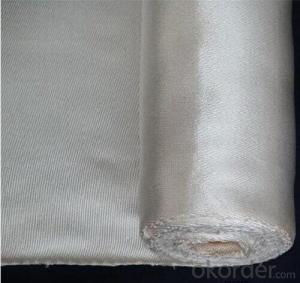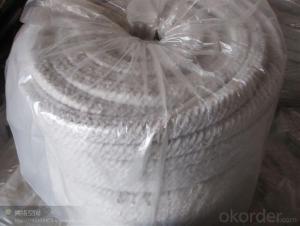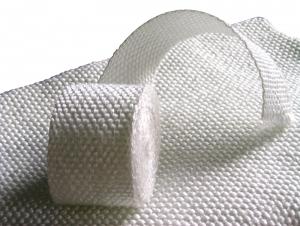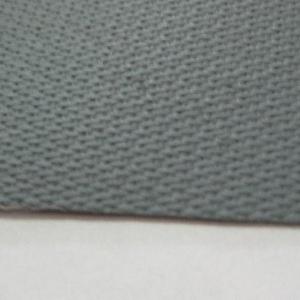PU Coated Fiberglass Fabric
- Loading Port:
- China Main Port
- Payment Terms:
- TT or L/C
- Min Order Qty:
- 10 Tons kg
- Supply Capability:
- 2*20FCL Per Month kg/month
OKorder Service Pledge
OKorder Financial Service
You Might Also Like
General Information of PU Coated Fiberglass Fabric
PU Coated Fiberglass Fabric is a fiberglass cloth coated with Polyurethane, and composite materials with multiple functions, the design of PU coated fiberglass fabric can adapt to different places.
It features good rebound resilience, toughness, softness, bright in color, superior resistance to wear, cold, oil, water, aging and weather. It also has the function of an antibacterium, and can also be used for mould proofing, heat-insulation and anti-ultraviolet.
Can be used for waterproofing in roof, underground projects, bridges, drainage channels, reservoir and disposal of sewage and etc, also applied to motor, chemical plant, equipment of power plant and so on.
Basic Info of PU Coated Fiberglass Fabric
Model NO.:CMAX-FF004
Type:Fiberglass Mesh
Function:Fireproof
Export Markets:Global
Additional Info of PU Coated Fiberglass Fabric
Trademark:CMAX
Packing:Plastic Bag+Carton+Pallet
Standard:ISO9001-2000
Origin:Jiang Su
HS Code:70193900
Production Capacity:2000000m2 Per Month
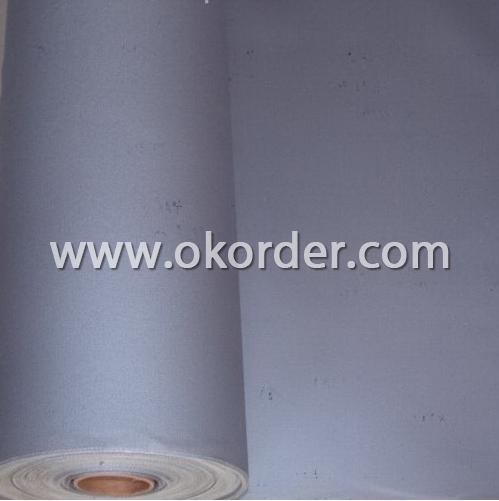
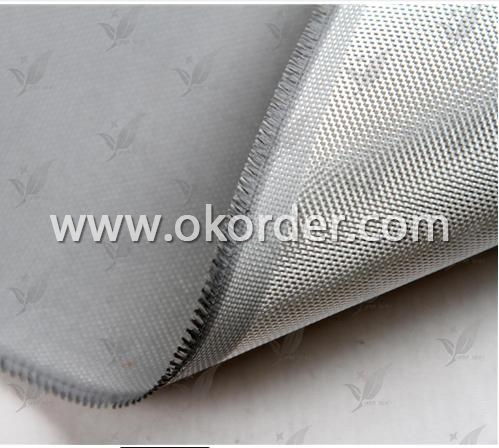
- Q:Can glass fiber textile be used in agriculture?
- Glass fiber textiles have the potential to be utilized in agriculture. Constructed from delicate strands of glass interwoven to form a flexible and resilient fabric, these textiles possess various uses within the agricultural sector. Greenhouse construction, crop protection, and erosion control are just a few of the applications in which glass fiber textiles can be employed. For greenhouse construction purposes, glass fiber textiles can serve as a protective cover for the structure. Able to transmit light, these fabrics allow sunlight to permeate while shielding crops from harsh weather conditions. Furthermore, they provide insulation, ensuring that optimal temperature and humidity levels are maintained within the greenhouse. In terms of crop protection, glass fiber textiles can act as effective insect screens, preventing pests and insects from infiltrating the crop area. These textiles possess small mesh sizes, facilitating the passage of air and water while thwarting unwelcome intruders. Additionally, they serve as a barrier against wind and hail, safeguarding crops from potential damage. Erosion control is yet another area where glass fiber textiles can prove advantageous in agriculture. By stabilizing soil on slopes and deterring erosion, these textiles aid in the preservation of land integrity and crop protection. Their durability and resistance to UV radiation ensure long-lasting protection against erosion, making them suitable for deployment on hillsides, embankments, and other erosion-prone areas. In conclusion, glass fiber textiles present numerous benefits in the field of agriculture. Their lightweight nature, durability, and exceptional resistance to environmental factors make them an invaluable asset. With their diverse range of applications, glass fiber textiles can contribute to enhancing the efficiency and sustainability of agricultural practices.
- Q:Please analyze the differences between the two fabrics. The more detailed, the better. Thank you
- The longitudinal length of bamboo fiber, bamboo fiber and the single length is less than half a centimeter, sucked into the gas chamber in the fiber and water to "call" effective UV blocking, any stimulation to the skin to prevent the outside, by the Shanghai Research Institute of physical China detection certificate: bamboo fiber penetration of ultraviolet almost zero (only 6/10000), the UV penetration of 2005/10000 cotton, bamboo fiber anti UV ability is 417 times that of cotton, so as to ensure the body from UV damage to produce negative ions, bamboo fiber is a green environmental protection materials from the bamboo practice out, it has natural negative ion generation characteristics.
- Q:Can glass fiber textile be used in aerospace interiors?
- Yes, glass fiber textile can be used in aerospace interiors. Glass fiber textiles have a number of properties that make them suitable for aerospace applications. Firstly, they are lightweight, which is essential in aerospace design to ensure fuel efficiency and reduce overall weight of the aircraft. Additionally, glass fiber textiles are known for their strength and durability, making them capable of withstanding the demanding conditions of aerospace environments. Glass fiber textiles also have good insulation properties, which is important for maintaining a comfortable and controlled interior temperature in the aircraft. They are resistant to heat and fire, which is crucial for ensuring safety in the event of a fire or high-temperature incident. Furthermore, glass fiber textiles can be easily molded and shaped into different forms, allowing for customized designs and integration into various parts of the aerospace interior, such as seat covers, cabin linings, wall panels, and floorings. They can also be treated with special coatings to enhance their resistance to abrasion, moisture, and chemicals. Overall, glass fiber textile is a versatile material that meets the stringent requirements of aerospace interiors in terms of weight, strength, durability, insulation, fire resistance, and design flexibility. Its use in aerospace interiors has proven to be effective and beneficial for both manufacturers and passengers.
- Q:Can glass fiber textiles cause respiratory issues?
- Yes, glass fiber textiles can cause respiratory issues if they are not handled or used properly. Glass fiber textiles are made from tiny strands of glass that can break and become airborne. When these fibers are inhaled, they can irritate the respiratory system and cause various health issues. Prolonged exposure to glass fiber textiles without proper protective measures can lead to conditions such as coughing, wheezing, shortness of breath, and even lung fibrosis. It is important to wear appropriate personal protective equipment, such as masks and gloves, when working with or near glass fiber textiles to minimize the risk of respiratory problems.
- Q:Can glass fiber textiles release harmful fibers?
- Improper manufacturing, handling, or maintenance of glass fiber textiles can result in the release of harmful fibers. These textiles are created by drawing molten glass into thin fibers, which can then be woven or knitted. If these fibers are damaged during production, installation, or use, they can break down into smaller particles or fibers that may become airborne and pose health risks when inhaled. The primary concern with glass fiber textiles is the release of respirable fibers, which are very small and can deeply penetrate the lungs. Inhaling these fibers can irritate the respiratory system and cause issues like coughing, wheezing, and shortness of breath. Prolonged exposure to high levels of glass fiber dust or fibers can even lead to more severe health conditions, such as lung scarring or cancer. To mitigate the risk of harmful fiber release, it is crucial to follow proper handling procedures and use suitable personal protective equipment when working with glass fiber textiles. Manufacturers should ensure the fibers are securely bound within the textile and regularly conduct quality control checks to identify any defects or damages that could result in fiber release. Additionally, regularly maintaining and cleaning glass fiber textiles can prevent the accumulation of dust and fiber particles, thereby reducing the potential for harmful fiber release. In conclusion, while glass fiber textiles have the potential to release harmful fibers if mishandled or damaged, adhering to proper manufacturing, handling, and maintenance practices can minimize the risk and ensure the safety of those working with or exposed to these materials.
- Q:How are glass fiber textiles used in the electronics industry?
- The electronics industry extensively utilizes glass fiber textiles for various purposes. Insulation is one of the main applications of these textiles. Due to their exceptional resistance to heat and excellent electrical insulation properties, they are ideal for creating protective barriers around sensitive electronic components. This insulation helps prevent heat transfer and electrical short circuits, ensuring the safe operation of electronic devices. Another use of glass fiber textiles is in the manufacturing of printed circuit boards (PCBs). PCBs act as the backbone of electronic devices, facilitating the necessary connections between different components. Glass fiber textiles, specifically epoxy glass laminates, serve as the base material for PCBs. These textiles are impregnated with epoxy resin and layered with copper sheets, resulting in a strong and durable substrate for the circuitry. Furthermore, glass fiber textiles are employed to reinforce electronic components. By incorporating glass fibers into the manufacturing process of connectors, switches, and housings, the overall strength and structural integrity of these components are enhanced. This reinforcement allows for better resistance against mechanical stress, such as impacts or vibrations, ensuring the longevity and reliability of electronic devices. Additionally, glass fiber textiles have applications in electromagnetic shielding. They can be woven into conductive fabrics, which are used to create shielding enclosures or covers for electronic devices. This shielding prevents electromagnetic interference (EMI) and radio frequency interference (RFI) from affecting the performance of sensitive electronic circuits. By effectively blocking these interferences, glass fiber textiles contribute to maintaining the quality of signal transmission and reception in electronic devices. Overall, glass fiber textiles play a crucial role in the electronics industry by providing insulation, serving as PCB substrates, reinforcing electronic components, and contributing to electromagnetic shielding. Their thermal and electrical insulation properties, combined with their strength and durability, make them an essential material for ensuring the proper functioning and protection of electronic devices.
- Q:What are the different construction methods used for glass fiber textiles?
- There are several different construction methods used for glass fiber textiles, each with its own unique characteristics and applications. The following are some of the commonly used methods: 1. Woven Construction: This is one of the most popular methods for producing glass fiber textiles. It involves interlacing glass fibers in a crisscross pattern to create a strong and durable fabric. Woven glass fiber textiles are known for their high tensile strength and excellent dimensional stability. They are commonly used in applications such as reinforcement in composites, insulation materials, and protective clothing. 2. Knitted Construction: Knitted glass fiber textiles are created by interlocking loops of glass fibers. This method allows for increased flexibility and stretchability compared to woven textiles. Knitted glass fiber fabrics are often used in applications where flexibility, breathability, and comfort are desired, such as in sports apparel, medical textiles, and automotive interiors. 3. Non-woven Construction: Non-woven glass fiber textiles are made by bonding or felting glass fibers together using heat, chemicals, or mechanical processes. This construction method results in a fabric that is lightweight, versatile, and easy to handle. Non-woven glass fiber textiles find applications in areas such as filtration, insulation, geotextiles, and automotive components. 4. Braided Construction: Braiding involves intertwining multiple glass fiber strands to create a strong and flexible fabric. Braided glass fiber textiles offer excellent resistance to abrasion and are commonly used in applications such as reinforcement in hoses, cables, and pipes, as well as in aerospace and marine industries. 5. Stitch-bonded Construction: Stitch-bonded glass fiber textiles are created by mechanically stitching glass fibers together. This method allows for the production of fabrics with specific patterns, structures, and properties. Stitch-bonded glass fiber textiles find applications in areas such as upholstery, carpet backing, and technical textiles. These different construction methods allow glass fiber textiles to be tailored for specific applications, offering a wide range of properties including strength, flexibility, breathability, and thermal insulation.
- Q:Can glass fiber textiles be used in soundproofing?
- Yes, glass fiber textiles can be used in soundproofing. Glass fiber textiles have excellent sound absorption properties, making them effective in reducing noise transmission. They can be used in various applications such as wall panels, acoustic curtains, and ceiling baffles to enhance sound insulation and create a quieter environment.
- Q:Can glass fiber textiles be used in tents and awnings?
- Tents and awnings can indeed utilize glass fiber textiles. These textiles, commonly referred to as fiberglass, possess various characteristics that make them suitable for these specific purposes. Firstly, fiberglass is known for its lightweight nature, thus facilitating convenient transportation and setup. Furthermore, it boasts high tensile strength, enabling it to endure tension and prevent tearing. This attribute renders it ideal for providing structural support to tents and awnings. Additionally, fiberglass textiles exhibit exceptional durability, enabling them to withstand harsh weather conditions such as rain, wind, and UV radiation. They are also resistant to rot, mold, and mildew, ensuring their longevity in outdoor settings. Moreover, fiberglass textiles possess excellent insulation properties, thereby contributing to the maintenance of a comfortable temperature inside tents and awnings. Overall, glass fiber textiles present a dependable and adaptable choice for constructing tents and awnings.
- Q:Can glass fiber textile be used in electrical applications?
- Yes, glass fiber textile can be used in electrical applications. Glass fiber textiles are highly durable and have excellent electrical insulation properties. They can withstand high temperatures and are resistant to chemicals, making them ideal for use in electrical insulation materials such as cables, wires, and circuit boards. The glass fibers provide stability and strength, ensuring the safety and reliability of the electrical components. Additionally, glass fiber textiles are also used for electromagnetic shielding and grounding purposes in electrical applications.
1. Manufacturer Overview |
|
|---|---|
| Location | |
| Year Established | |
| Annual Output Value | |
| Main Markets | |
| Company Certifications | |
2. Manufacturer Certificates |
|
|---|---|
| a) Certification Name | |
| Range | |
| Reference | |
| Validity Period | |
3. Manufacturer Capability |
|
|---|---|
| a)Trade Capacity | |
| Nearest Port | |
| Export Percentage | |
| No.of Employees in Trade Department | |
| Language Spoken: | |
| b)Factory Information | |
| Factory Size: | |
| No. of Production Lines | |
| Contract Manufacturing | |
| Product Price Range | |
Send your message to us
PU Coated Fiberglass Fabric
- Loading Port:
- China Main Port
- Payment Terms:
- TT or L/C
- Min Order Qty:
- 10 Tons kg
- Supply Capability:
- 2*20FCL Per Month kg/month
OKorder Service Pledge
OKorder Financial Service
Similar products
New products
Hot products
Related keywords





